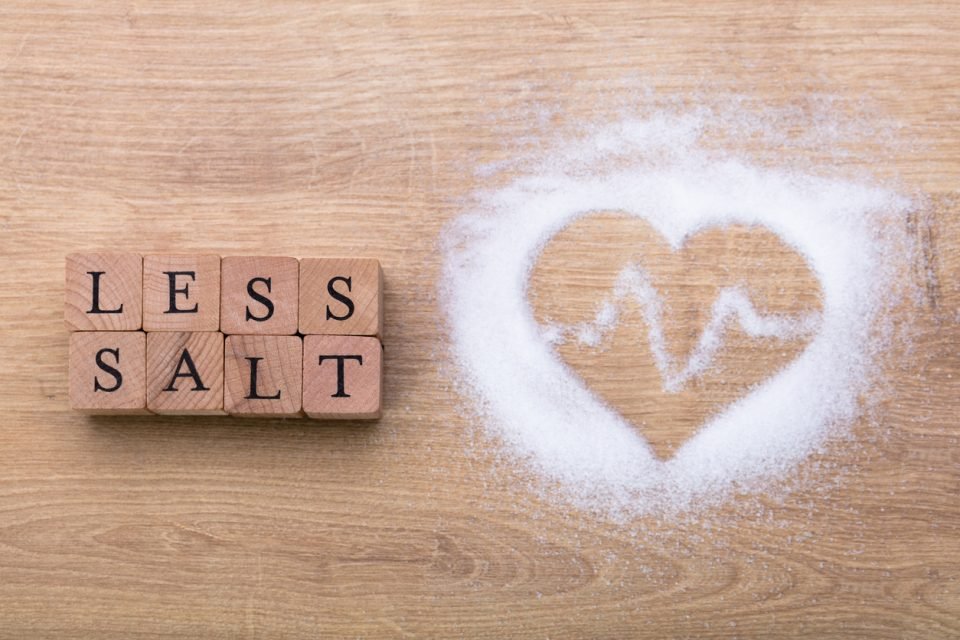
By American Heart Association
The American Heart Association suggests limiting sodium intake to no more than 2,300 milligrams (mg) per day, aiming for an optimal level of 1,500 mg a day for most adults.
How can I determine my sodium consumption?
You can assess your sodium intake by checking the Nutrition Facts label on food items. The sodium content per serving is expressed in milligrams (mg). Look for ingredients such as “sodium,” “salt,” and “soda” in the ingredient list. The total sodium on the Nutrition Facts label includes sodium from salt and from other sodium-containing components in the item. This includes substances like sodium nitrate, sodium citrate, monosodium glutamate (MSG), or sodium benzoate.
Be mindful of the serving size indicated on the Nutrition Facts label. If you consume a portion that is equivalent to two servings, you are actually consuming double the sodium specified.
What should my daily sodium intake be?
The American Heart Association advises that daily sodium intake should not exceed 2,300 mg, and ideally, it should not surpass 1,500 mg per day for the majority of adults.
Given that many Americans consume excessive sodium, even reducing your intake by 1,000 mg per day can lead to considerable improvements in blood pressure and overall heart health.
It’s important to note that over 70 percent of the sodium consumed by Americans originates from packaged, prepared, and restaurant foods—not from the salt shaker.
The average American consumes over 3,400 milligrams of sodium daily—significantly exceeding the recommendations from the American Heart Association and other health organizations. Many individuals likely underestimate their sodium intake. Research has shown that roughly one-third of adults surveyed were unable to estimate their sodium consumption, and more than half believed they were consuming less than 2,000 mg of sodium each day.
Maintaining sodium at appropriate levels is part of following a healthy dietary pattern. The American Heart Association’s dietary guidelines highlight the importance of consuming fruits, vegetables, whole grains, legumes, nuts, plant-based proteins, lean animal proteins, and fish. Swap processed meats, refined carbs, and sugary drinks for healthier choices. This approach should help you reduce sodium intake alongside harmful fats.
If you have specific medical conditions or dietary restrictions, it’s advised to consult a qualified healthcare professional regarding sodium and nutrient intake.
Here are some terms related to sodium that you might encounter on food packaging:
- Sodium-free – Contains less than 5 milligrams of sodium per serving and no sodium chloride.
- Very low sodium – Has 35 milligrams or less per serving.
- Low sodium – Contains 140 milligrams or less per serving.
- Reduced (or less) sodium – At least 25 percent less sodium per serving than the typical amount.
- Light (for sodium-reduced products) – If the food is “low calorie” and “low fat” and sodium is reduced by at least 50 percent per serving.
- Light in sodium – If sodium is reduced by at least 50 percent per serving.
Keep in mind that sodium levels can vary among the same types of food based on brand or restaurant.
At the end of the day, it’s manageable to track your sodium intake to make informed dietary choices when necessary. Sometimes, even a small change can lead to significant positive outcomes for your health! Be sure to continue exploring this website and our blog for more tips.
Can consuming too little sodium be a concern?
The body requires only a minimal amount of sodium (under 500 milligrams per day) to function correctly—that’s just a small amount, equivalent to less than ¼ teaspoon. Very few people consume less than that amount, and healthy kidneys can effectively retain the sodium your body needs.
Currently, there is no trustworthy evidence to suggest that consuming less than 1,500 mg of sodium daily poses a risk to the general population. However, there is some evidence indicating that it could be detrimental to specific patients, particularly those with congestive heart failure.
Concerned about sufficiently getting sodium? It’s unlikely.
Insufficient sodium intake is not a public health issue in the United States. The guideline to reduce sodium to 1,500 mg does not apply to individuals who lose significant amounts of sodium through sweat, such as competitive athletes or workers exposed to intense heat stress, like foundry workers and firefighters, or those who are advised otherwise by their healthcare provider. If you have medical conditions or specialized dietary requirements, consult a qualified healthcare professional.
Editor’s Note: This feature article was authored by American Heart Association editorial staff and reviewed by science and medicine advisors.






